Today’s Current Affairs: 30th August 2025 for UPSC IAS exams, State PSC exams, SSC CGL, State SSC, RRB, Railways, Banking Exam & IBPS, etc
Table of Contents
Vaquita Porpoise: World’s rarest marine mammal
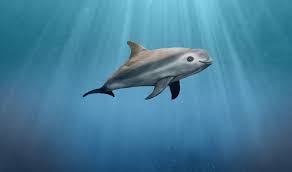
A new report has highlighted that only about 10 vaquita porpoise, the world’s rarest marine mammal, remain in the Gulf of California (Sea of Cortez), Mexico.
- Their numbers have plummeted due to entanglement in illegal gillnets used for catching totoaba (an endangered fish prized for its swim bladder).
Vaquita Porpoise (Phocoena sinus) - The vaquita porpoise (little cow in Spanish), is the world’s most endangered marine mammal discovered in 1958.
- Porpoises are the smallest members of the cetacean family (whales, dolphins, porpoises) and are distant relatives of dolphins, diverging around 15 million years ago.
- Marine, restricted to the northern Gulf of California (Sea of Cortez), Mexico, mostly in shallow waters up to 50 m deep.
- Vaquitas have dark rings around the eyes, dark patches on lips stretching to the fins. Newborns are darker with a gray fringe.
- Their large dorsal fin helps release body heat in warm waters.
- Protection Status: IUCN Red List: Critically Endangered. CITES: Appendix I
Gangotri Glacier : New Study
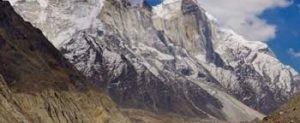
A study by IIT Indore and international collaborators reveals that the Gangotri Glacier has lost 10% of its snowmelt flow over four decades due to climate change.
- Gangotri Glacier is one of the largest glaciers in the Himalayas and is the primary source of the Ganges, the largest river in India.
- It is situated in the Uttarkashi district of Uttarakhand in the Garhwal Himalayas.
- It originates at the northern slope of the Chaukhamba range of peaks.
- It is fed by snow and ice from several peaks, including Shivling, Thalay Sagar, Meru, and Bhagirathi III.
- It lies at an altitude of around 4,000 meters bordering Tibet.
- The glacier is around 30 km in length and 4 km in width.
- Popularly known as Gaumukh, the terminus of the glacier resembles a cow’s mouth
- From its snout at Gaumukh, the Bhagirathi River emerges, which later joins the Alaknanda River to form the Ganges at Devprayag.
- The Gangotri Glacier holds immense religious significance in Hinduism and is visited by thousands of pilgrims every year, who trek up to Gaumukh, the source of the Ganges.
National Annual Report and Index on Women’s Safety (NARI) 2025:
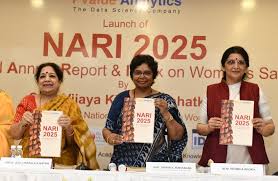
Released by the National Commission for Women, NARI 2025 offers the telling reality of the urban safety landscape.
- The report, a collaborative effort by the Group of Intellectuals and Academicians (GIA), Pvalue Analytics, The NorthCap University, and Jindal Global Law School, is based on a survey of 12,770 women across 31 cities in all states.
Highlights of the Report:
- It placed the national safety score at 65%, categorising cities as “much above”, “above”, “below” or “much below” this benchmark.
- Kohima, Visakhapatnam, Bhubaneswar, Aizawl, Gangtok, Itanagar, and Mumbai have emerged as the safest cities in the country for women, while Patna, Jaipur, Faridabad, Delhi, Kolkata, Srinagar, and Ranchi were ranked the lowest.
- Kohima and other top-ranked cities were associated with stronger gender equity, civic participation, policing, and women-friendly infrastructure.
- At the other end of the spectrum, cities like Patna and Jaipur fared poorly due to weak institutional responsiveness, patriarchal norms, and gaps in urban infrastructure.
- Overall, six in ten women surveyed felt “safe” in their city, but 40% still considered themselves “not so safe” or “unsafe”.
- Prevalence of harassment remains high, with 7% women reporting at least one incident of harassment in public spaces in 2024.
- The highest risk group is women under 24 years of age (14% reported harassment).
- Verbal harassment was most common (58%), with physical, psychological, economic, and sexual harassment reported less frequently.
- Neighborhoods (38%) and transport (29%) were the main hotspots for harassment.
- In terms of response, 28% of women confronted harassers, 25% left the scene, 21% sought safety in crowds, and 20% reported to authorities.
- The study revealed sharp drops in perceptions of safety at night, particularly in public transport and recreational spaces.
- While 86% of women felt safe in educational institutions during daylight hours, safety perceptions fall sharply at night or off-campus.
- The report shows low levels of faith in the redressal mechanism.
- Only one in three victims of harassment filed a formal complaint.
- Only one in four women expressed confidence that authorities would take effective action on their safety complaints.
- A concerning 53% were unaware whether their workplaces had a Prevention of Sexual Harassment (POSH) policy in place.
- Even when incidents are reported, only 22% are formally registered, and action is taken in a mere 16% of those cases.
International Atomic Energy Agency:
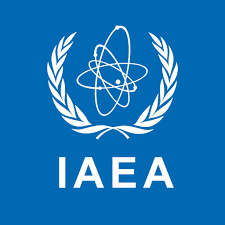
The head of the UN’s nuclear watchdog International Atomic Energy Agency has said a team of its inspectors are “back in Iran,”
- It is the world’s leading intergovernmental organisation for scientific and technical cooperation in the nuclear field.
- The IAEA Statute was approved on 23 October 1956 and came into force on 29 July 1957.
- It is an autonomous organization within the United Nations system.
- It reports to both the United Nations General Assembly and the UN Security Council.
- Its primary goal is to ensure that nuclear energy is not diverted for weapons purposes.
- Member Countries: The agency currently has 180 member states, reflecting its wide international mandate and credibility.
- Institutional Structure of the IAEA
- General Conference: The General Conference, composed of all member states, meets annually to approve budgets and set general policy directions.
- Board of Governors: The Board of Governors, comprising 35 members, meets about five times a year to: Approve safeguards agreements, Carry out statutory functions, and Appoint the Director General.
- Secretariat: The Secretariat, led by the Director General, handles the IAEA’s daily operations.
- Functions of the IAEA
- The IAEA works to ensure that nuclear technology is used solely for peaceful purposes.
- It applies comprehensive nuclear safeguards, including: Monitoring, On-site inspections, Information analysis, and Other techniques to verify peaceful use.
- Headquarters: Vienna, Austria.
Prairies:
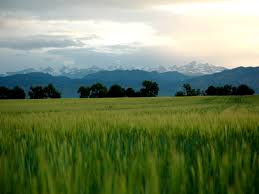
A newly launched database aim to ensure that the prairies are restored much more comprehensively.
- Prairies are flat, temperate grasslands found in North America.
- Prairie vegetation is maintained by grazing, fire, drought, and low temperatures.
- Although grasses dominate, lichens, mosses, forbs, and low- to mid-size shrubs also comprise prairie vegetation.
- Taller shrubs and trees, mostly willows and poplars, including aspen and cottonwoods, are found in depressions and valleys where there is sufficient moisture and nutrients.
- Prairie, like other temperate grasslands, is among the most productive and diverse of earth’s terrestrial ecosystems.
- Grasses, the predominant cover in prairie vegetation, have the following adaptations:
- Deep or extensive roots.
- Growing points at or near the soil surface that are tucked in the crown of the plant.
- Narrow leaves.
- Small flowers in dense heads that are pollinated by wind.
- Tough stems and leaves hardened with silica phytoliths (plant stones).
- Strategies to optimize photosynthesis without losing moisture.
- Wildlife species living in prairies have adapted to a semi-arid, windy, open environment.
- Species found here include elk, deer, coyote, bobcat, Badgers, jackrabbits, ground squirrels, pocket gophers, etc
- Similar temperate grasslands in South America are called Pampas, while in Africa they are described as velds and in Asia are known as steppes.
Samudrayaan Project:
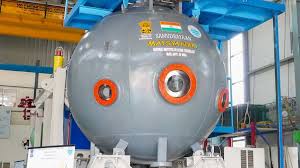
Two Indian aquanauts recently dived over 5,000 metres in the Atlantic Ocean aboard the French submersible Nautile, as part of training for India’s Samudrayaan Project.
- It is India’s first manned deep-sea mission under the Deep Ocean Mission (DOM) approved in 2021.
- It seeks to explore the ocean at depths up to 6,000 metres for resources, biodiversity, and scientific research.
- Established in approved by the Union Cabinet in 2021, with an outlay of ₹4,077 crore for five years.
- Objectives is to Develop deep-sea technologies – crewed submersibles, mining tools, and robotic vehicles and Survey ocean resources – locate polymetallic nodules rich in manganese, cobalt, nickel, and rare earths and Advance climate research – create ocean climate advisory models for projections.
Nimbrix Missile:
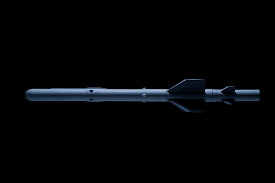
Swedish defense company Saab recently announced the development of a new missile named Nimbrix.
- Nimbrix Missile is a counter-unmanned aircraft system (C-UAS) missile.
- The missile is being developed to counter the growing battlefield threat posed by small unmanned aerial vehicles (UAVs).
- It was developed by the Swedish defense company Saab. It is its first dedicated C-UAS
- Saab designed the missile to minimize costs, including through the use of additive manufacturing and low-cost commercial and military off-the-shelf parts.
- Features:
- It is a “fire-and-forget” guided missile.
- The missile will offer a range of up to 5 km and use an active seeker to track targets.
- It uses an air-burst warhead designed to detonate in the vicinity of small drones or other UAS, bringing down multiple at a time.
- Nimbrix is intended for ground-based use, operating either independently or as part of wider air defence systems.
- With adaptable mounting options, it can be fitted to vehicles or fixed positions to meet different customer requirements.
UN Declares Famine in Gaza:
The United Nations has officially declared a famine in Gaza, marking the first famine in West Asia, with over half a million people facing extreme hunger due to conflict and restricted access to food. The Integrated Food Security Phase Classification (IPC) defines Famine as a situation in which at least one in five households has an extreme lack of food and face starvation and destitution, resulting in extremely critical levels of acute malnutrition and death.
IPC Phase 5 is the highest phase of the IPC Acute Food Insecurity scale, and is attributed when an area has at least 20% of households, acute malnutrition in at least 30% of children under five, and mortality of at least two per 10,000 people daily. Cause: Sharp escalation of Israel-Hamas conflict, massive displacement, and severe restriction of humanitarian and commercial food supplies.
33 years Of Rio Earth Summit:
The year 2025 marks 33 years since the 1992 Rio Earth Summit, a landmark event that shaped global climate governance. Rio Earth Summit (1992) is the United Nations Conference on Environment and Development (UNCED) held at Rio de Janeiro, Brazil in June 1992. Popularly known as the Rio Earth Summit, it was the largest global gathering of leaders to discuss environment and sustainable development. Established in 1992, attended by 172 countries, including 108 heads of state and over 2,400 NGOs.




